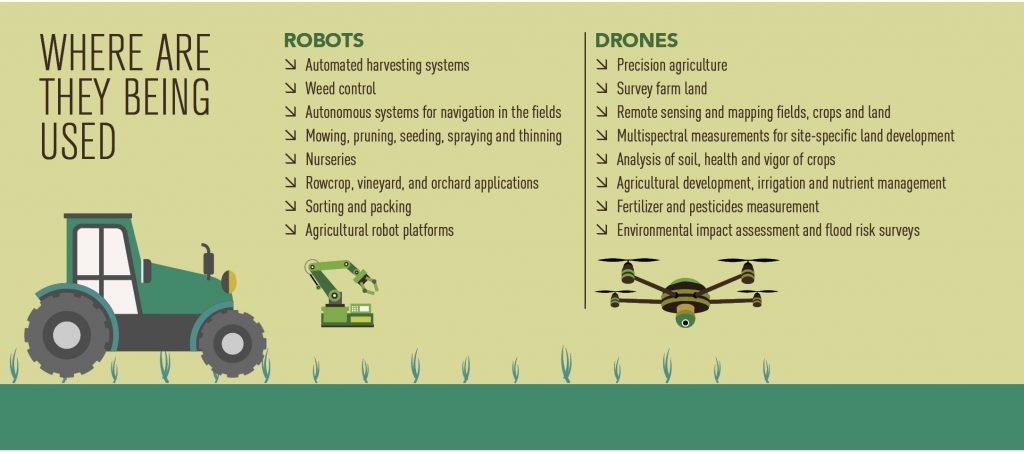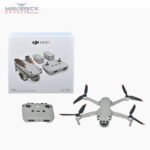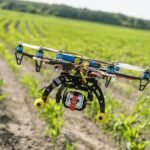Introduction
Importance of Agriculture
Agriculture forms the backbone of our society, providing not only food but also raw materials for various industries. It sustains lives and economies across the globe, highlighting its importance in everyday life. From the fresh produce at your local farmer’s market to the grains that fill your pantry, agriculture plays an essential role in feeding the ever-growing population. Did you know that approximately 40% of the global workforce is employed in agriculture? 🌍 This underscores how vital it is to enhance agricultural practices and make them more efficient. Here are a few reasons why agriculture matters significantly:
- Food Security: Ensures that all people have access to enough safe and nutritious food.
- Economic Growth: Contributes substantially to GDP in many countries.
- Rural Development: Provides livelihoods for millions, helping lift people out of poverty.
Growth of Drone Technology in Farming
As technology advances, so does the potential for agricultural enhancement. Enter drone technology, which has been rapidly making its mark in farming. These innovative tools allow farmers to engage in precision agriculture, streamlining operations and boosting productivity. Drone technology in agriculture is not just a passing trend; it’s revolutionizing how farmers approach various tasks:
- Efficiency: Drones can cover large areas quickly, enabling rapid assessments of crop health and field conditions.
- Cost-Effectiveness: By reducing labor costs and improving the accuracy of farming operations, drones can lead to significant savings.
- Data Collection: Equipped with sensors, drones gather critical information regarding soil conditions, moisture levels, and even pest infestations.
Imagine checking on thousands of acres of crops from the comfort of your home, receiving instant updates on their health, and pinpointing areas that need attention without stepping foot on the field. Drones are transforming possibilities into realities, making farming smarter and more sustainable. 🌱
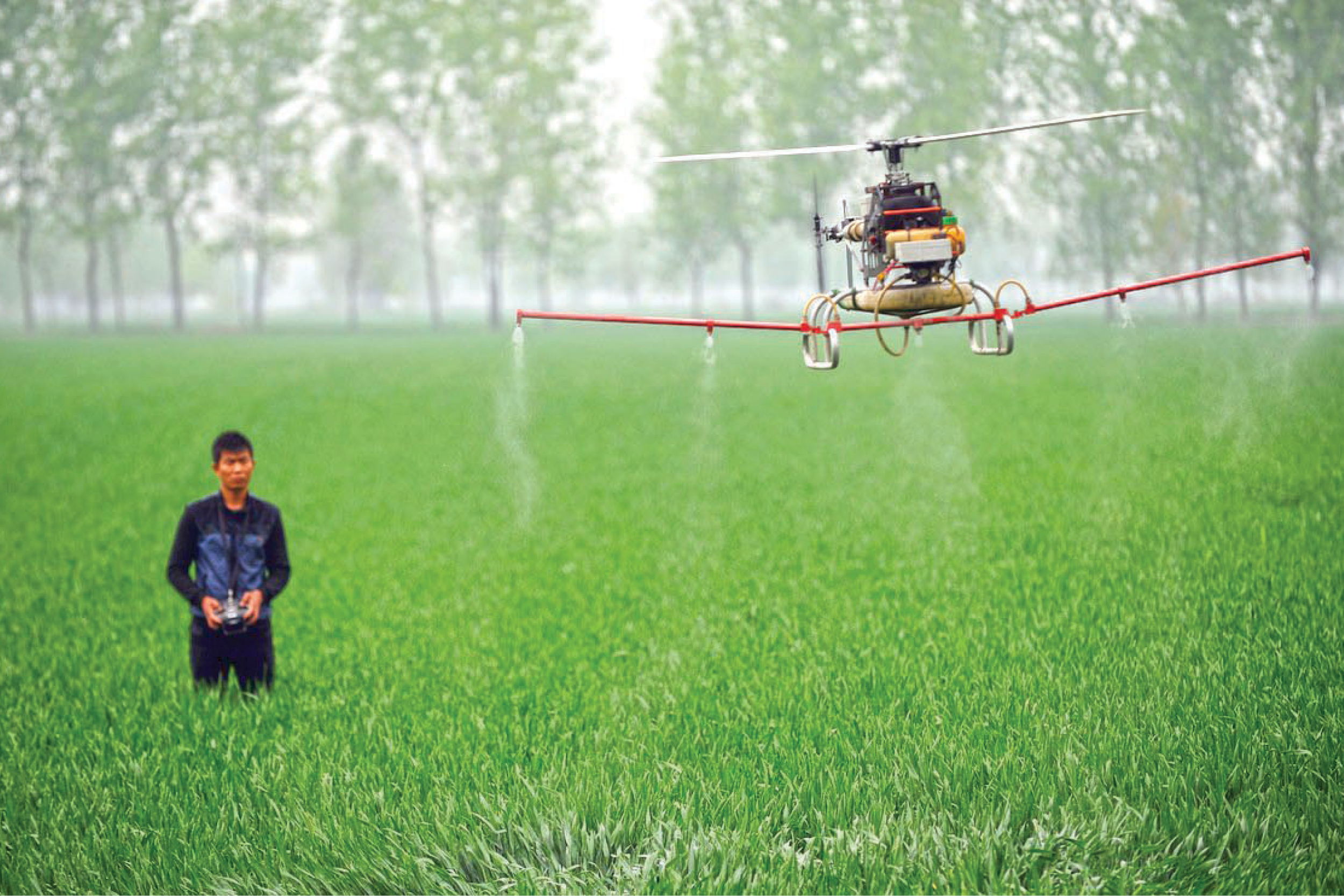
History of Drone Farming
Early Adaptation
When we think about drones, images of high-tech gadgets whizzing through the sky often come to mind. However, the early adaptation of drones in farming was far simpler yet groundbreaking in its own right. Initially, drones were used not for agricultural purposes but for military applications. However, it didn’t take long for innovators to see their potential in agriculture. In the early 2000s, farmers began implementing unmanned aerial vehicles (UAVs) to assess crop health and monitor vast fields. This shift represented a notable moment in the agricultural landscape. Many farmers were initially hesitant, often thinking, “Can a drone really help me?” Yet, those who took the plunge started to experience remarkable advantages, such as:
- Aerial Surveys: Farmers could quickly survey fields without the labor costs associated with traditional scouting methods.
- Photos and Videos: Early drones captured images which helped in identifying problem areas, such as pest infestations or nutrient deficiencies.
Evolution of Drone Technology
Fast forward to today, and the evolution of drone technology has been nothing short of impressive. Modern drones have transformed from basic flying devices to sophisticated tools equipped with advanced sensors and imaging technology. Here are some key milestones in the evolution of drones in farming:
- Multispectral Imaging: Drones now utilize spectrometers that collect data across various wavelengths, providing insights into plant health and soil moisture.
- Automated Flight Paths: Today’s drones can be programmed for specific routes, making them more reliable for repetitive tasks such as crop spraying or field mapping.
- Integration with Software: Many farmers use drone data alongside geographic information systems (GIS) to analyze their land effectively, leading to more informed decision-making.
This evolution has led to an accelerated adoption of drones across diverse agricultural sectors. A farmer recently shared with me how using drones allowed him to increase his yield by 15% in just one season! Isn’t that incredible? 🚀 The journey of drone farming showcases how technology can elevate traditional practices, making farming not only more efficient but also more sustainable.
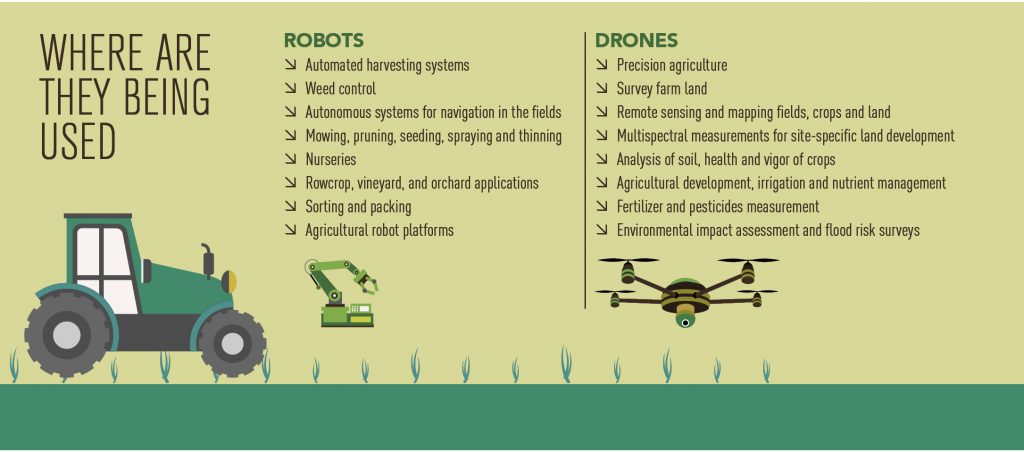
Benefits of Drone Farming
Increased Efficiency
Drones are not just a flashy trend in agriculture; they actually wield considerable power in enhancing efficiency on the farm. Imagine being able to cover vast fields in a fraction of the time it used to take—this is where drone technology shines! 🚁✨ Farmers can now easily monitor crop growth, identify issues before they escalate, and optimize the use of resources. Here are some noteworthy efficiency benefits of drone farming:
- Rapid Data Collection: Drones can survey large areas quickly, providing essential data that would take significantly longer using traditional methods.
- Streamlined Operations: Routine tasks like crop spraying and fertilizer application can be automated, freeing up time and labor for farmers.
- Cost Savings: By reducing the need for manual labor and minimizing input waste, farmers can save both money and time, leading to improved overall profitability.
A local farmer I spoke with mentioned that deploying drones for his crop assessments cut his operational time in half! This newfound efficiency has allowed him to focus on expanding his product line.
Improved Crop Monitoring
Another pivotal advantage of drone farming is the ability to enhance crop monitoring. In the complex world of agriculture, early detection of issues is critical. Drones equipped with advanced sensors help farmers keep a close eye on their plants’ health from the sky. Here’s how drones contribute to improved crop monitoring:
- Real-time Data Analysis: Drones can gather and relay real-time information, enabling farmers to make timely decisions.
- Detecting Stress: Using multispectral imaging, drones can identify stressed plants that may not be visible to the naked eye, allowing for early intervention.
- Yield Prediction: Drones can help predict yields based on the health of the crops, which aids in better planning for harvests and market strategies.
I remember visiting a farm where the owner had implemented drone technology for monitoring. She excitedly shared how the drones revealed water stress in certain areas weeks before it would have been evident from the ground. This proactive approach allowed her to rectify the issue promptly, resulting in healthier, more robust crops. 🌾 Drones are undeniably revolutionizing the way farmers monitor and manage their fields, paving the way for a more sustainable and productive future in agriculture.
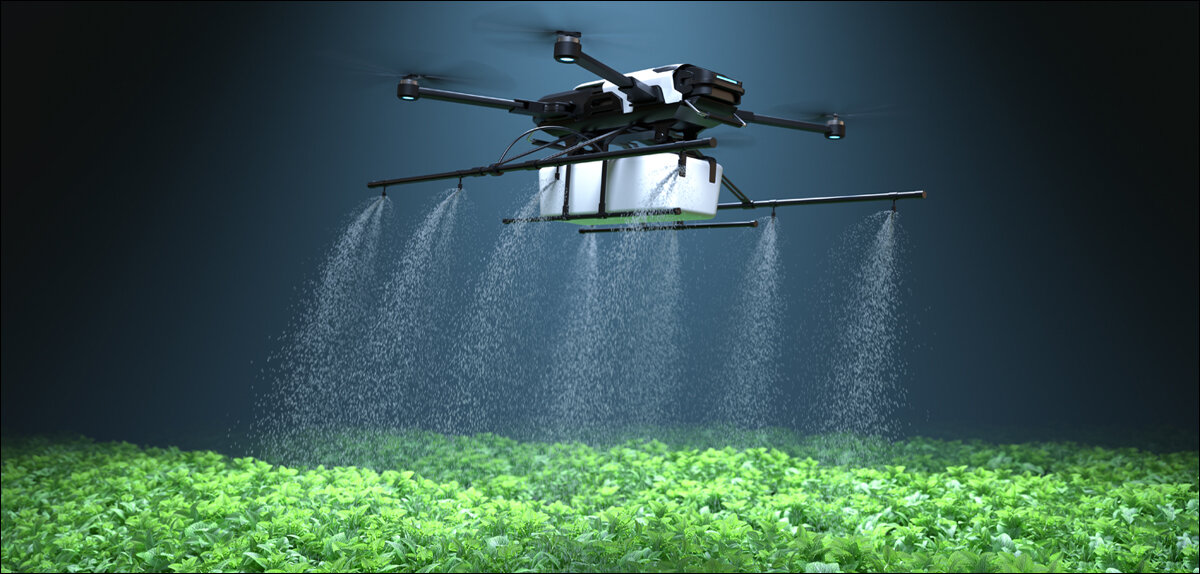
Challenges Faced in Drone Farming
Regulations and Policies
While the benefits of drone farming are clear, it’s essential to recognize the challenges that farmers face as they integrate this technology into their operations. One of the most significant hurdles is navigating regulations and policies surrounding drone usage. 📜✈️ Governments around the world are still catching up with the rapid advancement of drone technology, which can lead to confusion and restrictions. Here are some key regulatory challenges:
- Flight Restrictions: In many areas, there are strict regulations about where and how high drones can fly. Farmers may find themselves limited in their ability to effectively monitor their crops.
- Licensing Requirements: Many countries require drone operators to possess specific licenses, which can complicate the process for farmers who want to operate their drones independently.
- Data Privacy Issues: The ability to collect and analyze data from public fields raises concerns about data privacy that regulators are still figuring out.
A farmer I recently spoke with mentioned how navigating the licensing process took him weeks, delaying his ability to implement drone technology on his farm. It’s essential for farmers to stay informed about local regulations to avoid potential setbacks.
Cost of Implementation
Another significant challenge is the cost associated with implementing drone technology into farming practices. Although the long-term benefits can be substantial, the initial investment may be daunting for some farmers, especially smaller operators. 💸 Key financial considerations include:
- Purchase of Equipment: High-quality drones and advanced sensors can be expensive, often costing thousands of dollars.
- Software and Data Management: Alongside the hardware, farmers also need to invest in software for data analysis and management, which can add to the financial burden.
- Training Costs: To maximize the benefits of drone technology, farmers may need to invest in training and education to gain the necessary skills for effective operation and analysis.
One small farmer shared that he hesitated to adopt drone technology due to the upfront costs, fearing it wouldn’t pay off quickly enough. However, once he analyzed his potential returns, he took the leap, and now he wouldn’t go back! These challenges can be significant, but the willingness to adapt and invest in new technologies often pays dividends in the long run. Drone farming may come with its hurdles, but overcoming them opens up an exciting realm of possibilities for modern agriculture! 🌱
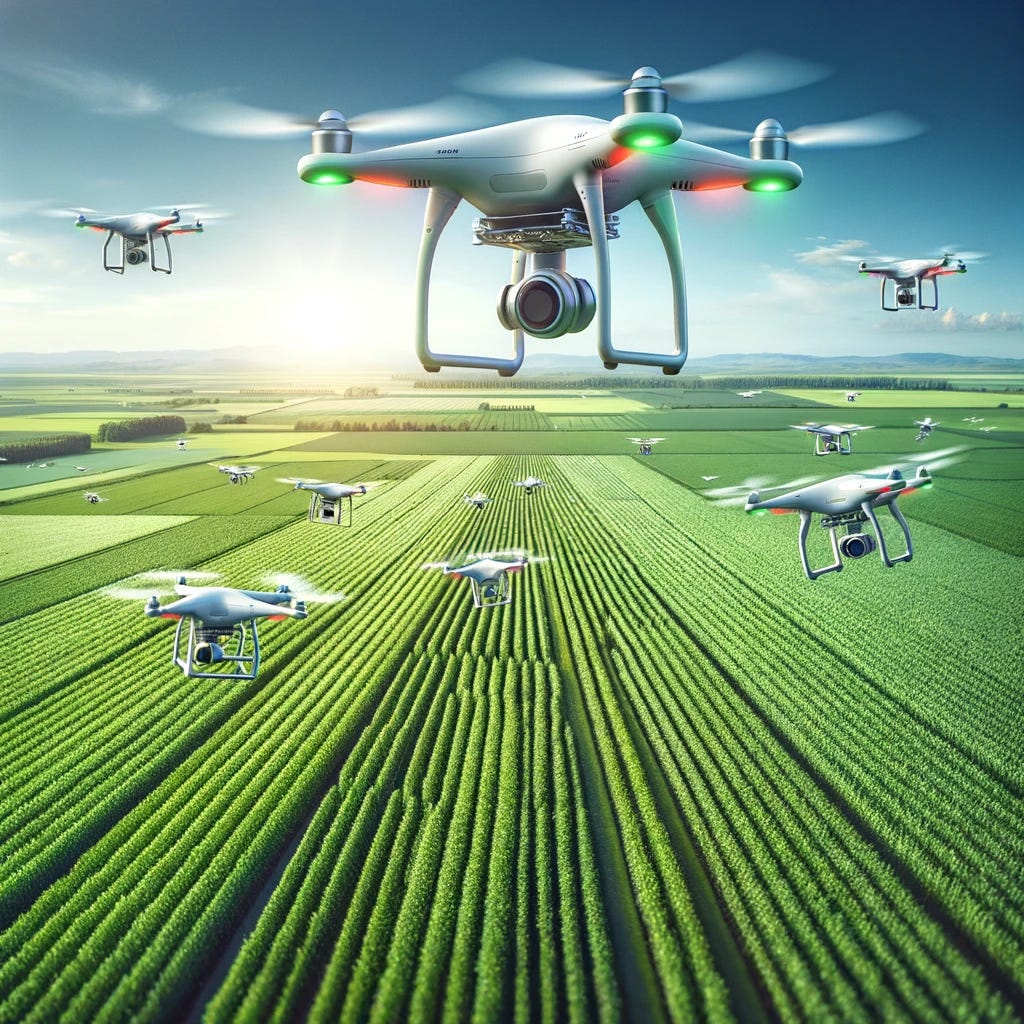
Applications of Drones in Agriculture
Crop Spraying
Drone technology has revolutionized various agricultural practices, notably in the area of crop spraying. Gone are the days when farmers would rely solely on traditional methods, which often required significant time and manual labor. With drones, the process is streamlined, efficient, and targets crops with pinpoint accuracy. 🌾✨ Here are some advantages of using drones for crop spraying:
- Precision Application: Drones can be programmed to deliver the exact amount of pesticide or fertilizer needed, reducing waste and minimizing environmental impact.
- Access to Hard-to-Reach Areas: Drones can easily navigate uneven terrain or dense foliage, ensuring that every inch of the field gets the necessary treatment.
- Time Savings: A drone can spray an area in a fraction of the time it would take using ground equipment, allowing farmers to cover more land quickly.
I spoke with a farmer who transitioned to drone spraying and noticed an immediate difference. He shared, “Not only did it cut my spraying time in half, but I also saved on product costs because the precision is so much better.”
Soil Analysis and Mapping
Another prominent application of drones in agriculture is soil analysis and mapping. Understanding soil properties is critical for delivering optimal crop yields, and drones provide farmers with vital insights that were previously cumbersome to obtain. Drones equipped with multispectral sensors can collect data to analyze:
- Soil Moisture Levels: By assessing moisture content, farmers can schedule irrigation more efficiently and avoid over- or under-watering.
- Nutrient Analysis: Soil health can be evaluated, allowing farmers to tailor their fertilization strategies based on specific field needs.
- Topographical Mapping: Drones generate detailed maps of land contours, helping farmers understand drainage patterns and plan for soil conservation.
A farmer I know utilized drone mapping to reveal variations in soil health across his fields, which allowed him to apply amendments more accurately. He remarked, “It was a game-changer! I could prioritize areas that needed urgent attention.” Implementing drones in both crop spraying and soil analysis elevates agricultural practices, allowing farmers not just to work harder but to work smarter. 🚜🔍 As technology continues to evolve, the applications of drones may only expand, opening doors to even more innovative farming solutions.
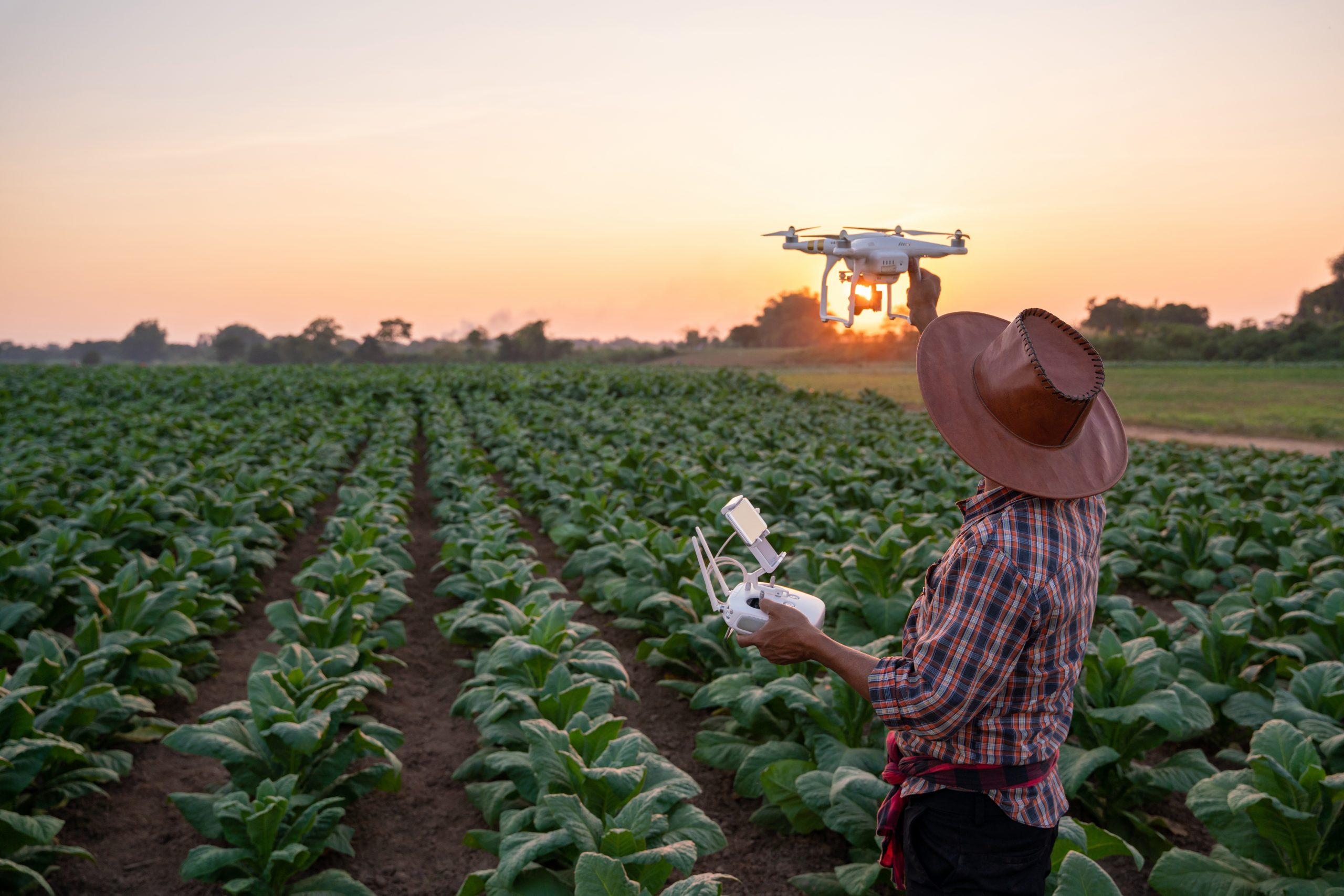
Automation in Farming Operations
Planting and Seeding
Automation has taken center stage in modern agriculture, especially when it comes to planting and seeding. The days of relying on entirely manual methods are becoming a thing of the past as innovative technologies emerge to simplify the process. 🌱🤖 Automated planting systems, including drones and robotic planters, are proving to be game-changers. Here are some of the ways automation enhances planting and seeding:
- Precision Planting: Automated systems can plant seeds at optimal depths and spacings, ensuring each plant has the best chance of thriving.
- Time Efficiency: With modern planters able to cover large areas quickly, farmers can significantly reduce their planting time. Many have shared that they can complete in a day what used to take a week!
- Data-Driven Decisions: Automated systems can often connect with software that analyzes soil conditions and historical yield data to determine the best planting strategies.
I recently visited a farm where the owner used a high-tech seeder that adjusted the planting rate based on real-time soil data. He excitedly told me, “Not only have my yields improved, but my input costs have dropped because I’m planting with such precision.”
Irrigation Management
Irrigation management is another area where automation has made significant strides. In a world where water conservation is increasingly crucial, automated irrigation systems allow farmers to optimize water usage effectively. Here’s how automation is enhancing irrigation management:
- Smart Irrigation Systems: These systems use sensors to monitor soil moisture levels and automatically adjust watering schedules, ensuring crops receive the right amount of water at the right time.
- Remote Monitoring: Many farmers are now equipped with mobile apps that let them control and monitor their irrigation systems from anywhere. Imagine being able to check the moisture levels in your fields while lounging at home! 📱🌾
- Cost Savings: Automated irrigation not only conserves water but also reduces energy costs by avoiding unnecessary pumping during off-peak hours.
Speaking with a farmer who integrated automated irrigation technology, she commented on the transformation she experienced. “My water usage has dropped by 30%, and my plants are healthier than ever!” The incorporation of automation in planting and irrigation management not only enhances productivity and sustainability but also arms farmers with the tools to respond to the challenges of modern agriculture effectively. 🌍💧

Future Trends in Drone Farming
Artificial Intelligence Integration
As we look forward to the future of drone farming, one of the most exciting trends is the integration of artificial intelligence (AI). This fusion of technology has the potential to elevate agriculture to unprecedented levels, providing insights and capabilities that we can only dream of today. 🌟🤖 AI can enhance the functionality of drones in several ways:
- Enhanced Data Analysis: With AI algorithms, drones can analyze vast amounts of data collected from fields in real-time. This allows farmers to promptly identify issues like nutrient deficiencies or pest infestations.
- Predictive Analytics: AI-driven systems can analyze historical data to forecast crop yields and advise farmers on the best strategies for planting and pest management.
- Automated Decision-Making: By combining data from drones with AI, decisions about irrigation, fertilization, and harvesting can be automated, saving farmers valuable time while increasing productivity.
A farmer I met recently highlighted how AI in drones helped him anticipate weather changes, allowing him to protect his crops better. “It feels like having a weather wizard and a crop advisor all in one—and it gives me peace of mind,” he mentioned.
Expansion of Drone Fleet
In addition to AI advancements, we can expect to see an expanded drone fleet in the agricultural sector. As drone technology becomes more accessible and affordable, more farmers will adopt these tools, leading to a diverse array of specialized drones for various agricultural tasks. 🚜🚁 Key elements of this trend include:
- Drones for Specific Crops: We may see drones designed specifically for different types of crops, optimizing their capabilities to address the unique needs of each plant.
- Swarm Technology: Utilizing multiple drones simultaneously can enhance efficiency. Imagine a fleet of drones working together to apply nutrients or monitor crops, dramatically speeding up operations.
- Shared Drone Services: As many smallholders may not afford individual drones, the emergence of drone services that farmers can hire could make advanced technology more accessible to everyone.
Reflecting on this trend, a local cooperative is already renting drones for specific tasks, allowing small farmers to benefit without the hefty upfront costs. “It’s collaborative farming at its finest,” one member shared enthusiastically. The future of drone farming looks promising, with AI integration and an expanding fleet set to redefine how we approach agriculture. As these innovations roll out, farmers will have the opportunity to cultivate their land smarter, leading to sustainable and efficient farming practices for years to come! 🌱🌍

Environmental Impact of Drone Farming
Reduction in Chemical Use
One of the most significant environmental benefits of drone farming is the reduction in chemical use. Traditional farming methods often lead to over-application of pesticides, herbicides, and fertilizers, which can adversely affect both ecosystems and human health. Drones provide a more targeted, efficient approach to crop management, steering us toward more sustainable practices. 🌿✨ Here’s how drones help mitigate the environmental impact:
- Precision Application: Drones can deliver chemicals with incredible accuracy, applying them only where they are needed and in the precise amounts. This not only saves on product costs but also lessens the overall chemical burden on the environment.
- Lower Drift: The low-altitude flight capabilities of drones significantly reduce the chances of chemical drift, which often occurs with traditional aerial spraying methods. This enhances safety for nearby crops, water bodies, and non-target species.
- Reduced Runoff: Applying chemicals only when and where needed minimizes runoff into local waterways, which can contribute to problems like algal blooms and water contamination.
A farmer I know began using drones for targeted spraying and quickly noted a reduction in chemical costs by over 25%. She remarked, “It feels great knowing I’m protecting my crops and our environment at the same time!”
Soil Conservation
In addition to lessening chemical use, drone farming significantly contributes to soil conservation—a critical aspect of sustainable agriculture. Healthy soil is vital for growing crops, and protecting it ensures long-term productivity and ecological balance. 🌍💧 Drones promote soil conservation in a few key ways:
- Enhanced Soil Monitoring: Drones equipped with multispectral sensors can assess soil health and identify areas requiring attention, allowing farmers to apply amendments only where necessary, thereby preventing soil degradation.
- Minimized Soil Disturbance: By using drones for tasks like crop planting and monitoring, farmers can reduce the need for heavy machinery, which compacts soil and disrupts its structure.
- Cover Crop Management: Drones can monitor cover crops, which play a crucial role in preventing soil erosion and maintaining nutrient levels. This fosters a healthier ecosystem and enhances biodiversity.
A local agronomist shared how his use of drones for soil monitoring has improved not only productivity but also soil health over time. “Farming with care for the environment is essential. Drones help me do just that,” he said, expressing his commitment to sustainable practices. Through drone technology, farmers are not only advancing their operations but also becoming stewards of the environment, reinforcing the crucial balance between productivity and ecological sustainability. 🌱✨

Case Studies of Successful Drone Farming
Large-Scale Farms
The integration of drone technology in large-scale farming operations has proven to be a game-changer, enhancing efficiency and productivity significantly. One such enterprise is a vast corn and soybean farm in the Midwest, where drones have become an integral part of their management practices. 🚜✨ Here’s how they’ve successfully employed drone technology:
- Aerial Crop Monitoring: The farm utilizes drones equipped with multispectral cameras to survey thousands of acres quickly. This allows them to identify areas needing attention, such as water stress or pest infestations, far earlier than traditional methods would allow.
- Efficient Spraying: By deploying drones for crop spraying, this farm has reduced chemical use by over 30%, while also improving coverage. The drones apply fertilizers and pesticides precisely where needed, thereby minimizing waste and environmental impact.
- Data-Driven Decisions: The farm uses drone-collected data to inform decisions around crop rotation, planting schedules, and predicted yield, leading to better management practices that increase sustainability and profitability.
This success story exemplifies how large-scale farms can harness the power of drone technology to enhance efficiency and promote sustainable agricultural practices.
Smallholder Farmers
While drone farming may seem tailored for large operations, smallholder farmers are also reaping the benefits. A remarkable example is a group of coffee growers in Colombia who embraced drone technology to tackle their unique challenges. 🌱☕ Here’s how these smallholders have successfully integrated drones:
- Community Drone Services: Together, small farmers pooled resources to access drone services, allowing them to monitor crop health and assess their fields without bearing hefty individual costs. This collaboration has fostered a sense of community and shared learning.
- Targeted Pest Management: By employing drones for aerial surveys, the coffee growers can identify pest outbreaks early. This proactive monitoring has led to a significant reduction in crop loss, saving the community both time and money.
- Improved Quality Control: Drones help farmers analyze microclimates in their fields, allowing for tailored strategies that enhance the quality of the coffee produced. Higher quality often translates to better market prices.
These case studies illustrate that regardless of scale, farmers—whether large or small—can successfully implement drone technology. The adaptability and effectiveness of drones empower farmers to enhance their operations, ensuring sustainability and improved yields for future generations. 🌍🌾
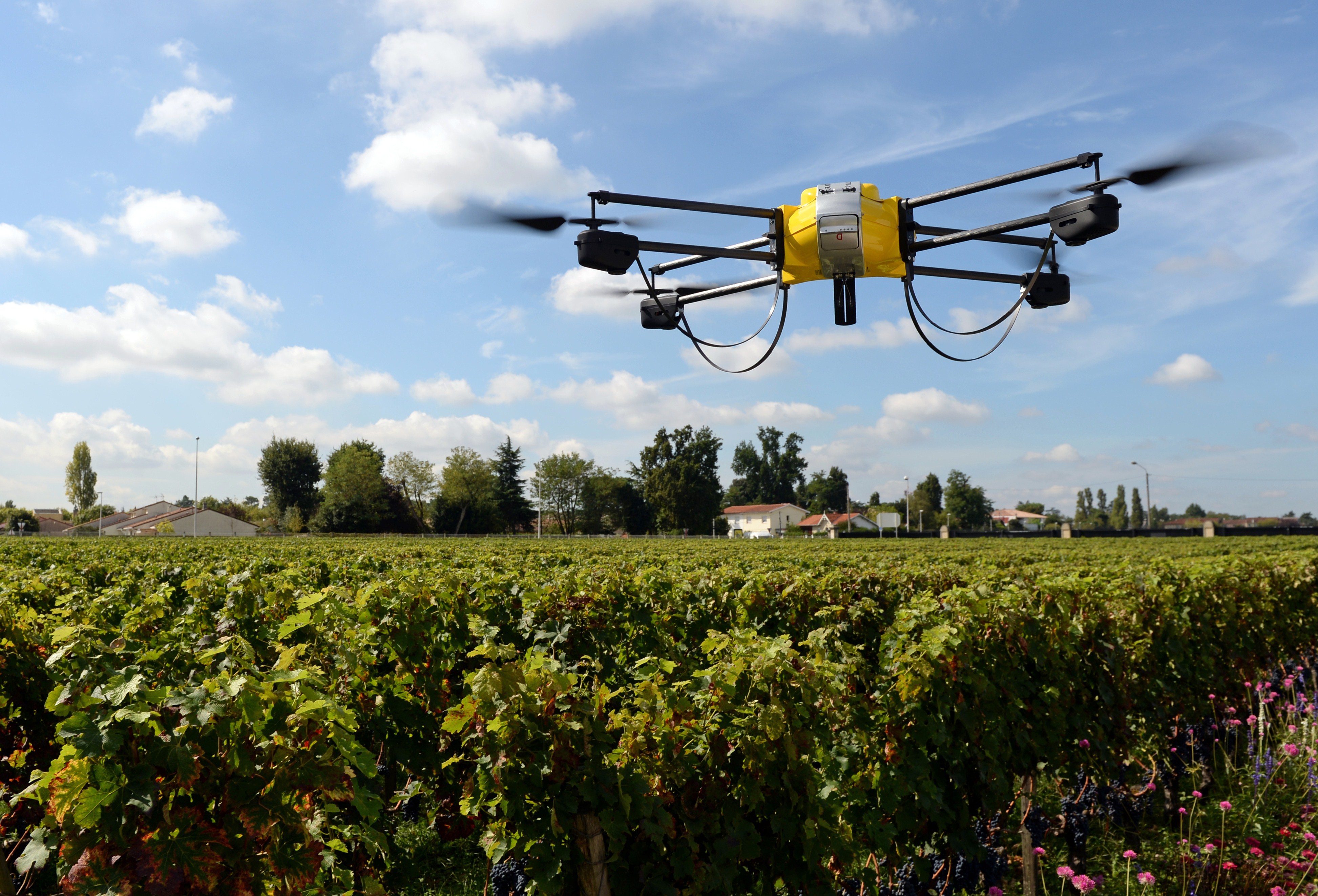
Investment Opportunities in Drone Farming
Venture Capital Funding
As the agricultural sector continues to embrace advanced technologies, investment opportunities in drone farming are surging. Venture capital funding is stepping in to support innovative companies that develop cutting-edge drone solutions for agriculture, recognizing the potential for significant returns on investment. 💰🚀 Here’s how venture capital is shaping the future of drone farming:
- Startups on the Rise: New drone technology startups are emerging, focusing on everything from crop monitoring to automated spraying systems. Investors see potential in these businesses as they address the real-world needs of modern agriculture.
- Focused Innovations: Venture capitalists are investing in specialized applications, like AI-driven drone analytics and software platforms that optimize agricultural drone operations. For example, one startup recently secured funding to develop drones capable of assessing soil health in real-time.
- Scaling Solutions: With adequate funding, these startups can scale their technology, making it more accessible to farmers of all sizes. This helps democratize drone use, allowing smallholders to benefit from innovations that were once reserved for larger farms.
A venture capitalist I spoke with shared that they’re excited about the intersection of technology and agriculture. “The potential to solve big challenges in food production while improving sustainability is inspiring,” they said.
Future Market Growth
The growth potential of the drone farming market is substantial, presenting another compelling investment opportunity. As more farmers recognize the advantages of integrating drone technology, the demand for drone services and equipment is set to rise sharply. 📈🌱 Here are some key trends contributing to future market growth:
- Increased Adoption: Farmers are increasingly adopting drones for precision agriculture, disease management, and resource optimization. Research indicates that the global agricultural drone market is expected to exceed $6 billion by 2025, driven by this rising adoption.
- Technological Advancements: Continuous advancements in drone technology, including improvements in battery life, sensor quality, and AI capabilities, will further drive market growth. Enhanced features make drones more effective and appealing for agricultural applications.
- Sustainability Focus: As the world leans more towards sustainable practices, the demand for drones that aid in reducing chemical usage and promoting soil conservation will grow. This presents an opportunity for investors looking for responsible investment options.
In conclusion, the investment landscape in drone farming is rich with opportunities. Both venture capital funding and anticipated market growth create a landscape that’s ripe for innovation and success, making it an attractive sector for forward-thinking investors. 🌍💡

Training and Education in Drone Farming
Certification Programs
As drone technology becomes increasingly integral to modern farming practices, the need for robust training and education is essential. Certification programs are stepping up to equip farmers and agricultural workers with the necessary skills to operate drones safely and effectively. 🎓🚁 These programs aim to create a knowledgeable workforce that can leverage drone technology to its fullest potential. Here’s what you can expect from certification programs focused on drone farming:
- Regulatory Compliance: Many programs include coursework on aviation regulations and safety, ensuring that drone operators understand the legal requirements and best practices for flying drones in agricultural settings.
- Technical Proficiency: Participants learn how to operate drones, collect data, and interpret the information gathered. Hands-on training often includes piloting drones in various agricultural scenarios.
- Specialized Applications: Some programs offer specialized tracks focusing on specific use cases, such as crop monitoring, soil analysis, or precision spraying. This allows individuals to hone in on what’s most relevant to their farming needs.
A local community college in my area recently launched a certification program in agricultural drone management. The response from farmers eager to learn has been overwhelming. One farmer shared, “Having that certification under my belt really boosts my confidence in using drones on my farm!”
Technical Skill Development
Beyond certification programs, ongoing technical skill development is vital for those involved in drone farming. As technology evolves, so must the proficiency of those who use it. Investing in continuous learning ensures that operators can adapt to new tools and methods. Key areas of focus in technical skill development include:
- Data Analysis Skills: Understanding how to interpret the data collected by drones is crucial. Workshops on data analytics can empower farmers to make informed decisions based on actionable insights.
- Software Familiarization: Training on specific software used for planning drone flights, processing aerial imagery, and managing farm data can significantly enhance operational efficiency.
- Networking Opportunities: Participating in local workshops or online forums can help individuals connect with other drone operators, share experiences, and learn from each other’s successes and challenges.
By investing in both certification and ongoing technical training, farmers can harness the full potential of drone technology, driving efficiency and sustainability in their operations. 🚜🌿 As the landscape of agriculture continues to shift, those armed with the right knowledge will be well-positioned to lead the charge into an exciting future.

XII. Collaboration in the Agriculture Industry
Partnerships with Technology Companies
The rapid evolution of technology in agriculture, particularly involving drones, has fostered exciting collaborations between farmers and technology companies. These partnerships are vital for driving innovation, improving efficiency, and harnessing the full potential of agricultural technology. 🤝🌾 Here are some ways these partnerships thrive:
- Customized Solutions: Technology companies often work closely with farmers to develop tailored drone solutions that meet specific agricultural needs. This ensures that the technologies address practical challenges faced in the field.
- Research and Development: Collaborative efforts can lead to groundbreaking research that integrates the latest advancements in drone technology with real-world agricultural applications. For example, companies might focus on improving algorithms for crop monitoring and pest detection.
- Education and Training: Many tech firms provide training sessions and resources that help farmers understand how to effectively utilize new tools. This supportive framework fosters confidence and improves the overall adoption rate of drone technology within the agricultural community.
I once attended a seminar where a tech company shared its success in collaborating with local farmers to adapt drone sensors for soil health assessments. The enthusiasm among farmers was contagious as they explored how this technology could enhance their practices.
Government Initiatives
In tandem with private partnerships, government initiatives play a crucial role in enhancing collaboration within the agricultural sector. Governments recognize the importance of integrating technology into farming to boost productivity and sustainability. 🌍📊 Key government initiatives include:
- Funding and Grants: Many governments offer grants and funding opportunities for farmers looking to adopt innovative technologies, including drones. These financial incentives help lower barriers to entry for those interested in modernizing their operations.
- Research Collaboration: Government agencies often partner with research institutions and universities to conduct studies on the benefits of drone technology in agriculture. The results can help shape future policy and funding directed towards sustainable practices.
- Regulations and Support Frameworks: Establishing clear regulatory frameworks encourages innovation while ensuring safe drone operations. Governments that support farmers through helpful policies can foster an environment ripe for technological advancement.
During a recent discussion with a state agricultural official, she emphasized the importance of aligning public support with private sector innovation. “When government and technology companies work together with farmers, we create a synergy that drives real progress.” In conclusion, collaboration between technology companies and government initiatives is pivotal in advancing drone farming and agricultural practices. By joining forces, they are building a resilient agricultural future that harnesses innovation for the benefit of farmers and the environment alike. 🌱🚀
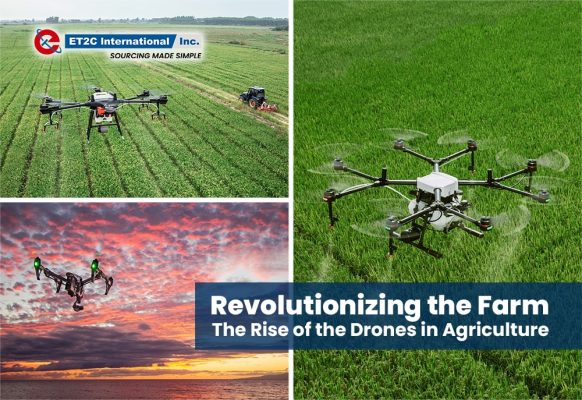
XIII. Conclusion
Summarizing the Future of Drone Farming
As we’ve explored throughout this discussion, the future of drone farming is exceptionally promising, poised to revolutionize agricultural practices across the globe. The integration of drone technology, with its myriad applications—from crop monitoring and soil analysis to precision spraying—has the potential to enhance efficiency, drive sustainability, and significantly boost yields. 🌾🚀 Key takeaways about the future of drone farming include:
- Continued Technological Advancements: Innovations in AI, machine learning, and sensor technologies will only enhance the capabilities of drones, enabling smarter and more effective farming practices.
- Broader Adoption Across Scales: Whether large-scale operations or smallholder farms, drone technology is becoming accessible to all, leading to inclusive agricultural benefits.
- Environmental Stewardship: With a focus on sustainability and soil conservation, drones are paving the way for environmentally-friendly practices that can benefit both farmers and our planet.
A farmer I spoke with recently reflected on the transformation he’s witnessed over the years, saying, “It feels like we’re on the brink of a new agricultural era where technology and tradition meet for the betterment of all.”
Call to Action
Now is the perfect time to engage with this exciting technology! Whether you’re a farmer looking to innovate, an investor seeking fresh opportunities, or someone interested in the agricultural sector, here’s how you can get involved:
- Educate Yourself: Attend workshops, webinars, or local seminars focused on drone technology in agriculture. The more you know, the better positioned you’ll be to take advantage of these developments.
- Connect with Experts: Reach out to farmers, agronomists, or technology companies to foster collaboration and share ideas. Networking can reveal valuable insights and opportunities.
- Invest in Innovation: If you’re in a position to invest, consider supporting startups focused on agricultural technology, including drone management platforms and precision farming applications.
In embracing the future of drone farming, we can collectively nurture a more efficient, sustainable, and resilient agricultural landscape. Let’s take the next steps together! 🌍✨
